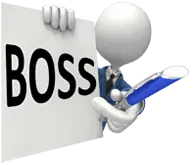“Build a Better Business With Systems” Chapter 6 + Summary: Make Life Easier
Table of Contents Introduction Chapter 1 – What are Systems and Why do You Need Them? Chapter 2 – A General Outline to Creating Systems
Table of Contents Introduction Chapter 1 – What are Systems and Why do You Need Them? Chapter 2 – A General Outline to Creating Systems
Table of Contents Introduction Chapter 1 – What are Systems and Why do You Need Them? Chapter 2 – A General Outline to Creating Systems
Table of Contents Introduction Chapter 1 – What are Systems and Why do You Need Them? Chapter 2 – A General Outline to Creating Systems
Table of Contents Introduction Chapter 1 – What are Systems and Why do You Need Them? Chapter 2 – A General Outline to Creating Systems
Table of Contents Introduction Chapter 1 – What are Systems and Why do You Need Them? Chapter 2 – A General Outline to Creating Systems
Introduction You’re working killer hours but you’re not making much money. You keep making the same mistakes over and over again. You’re just plain stressed
